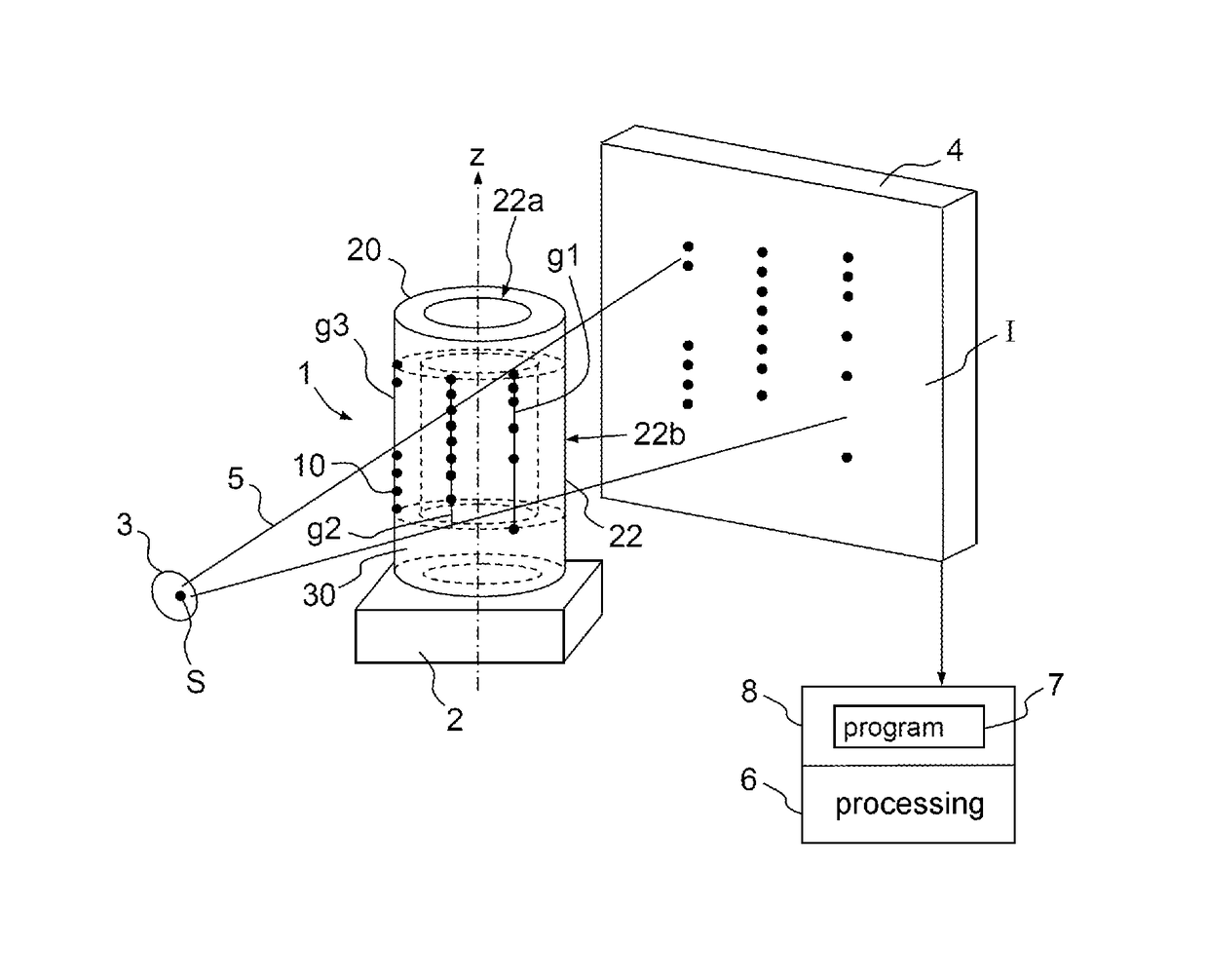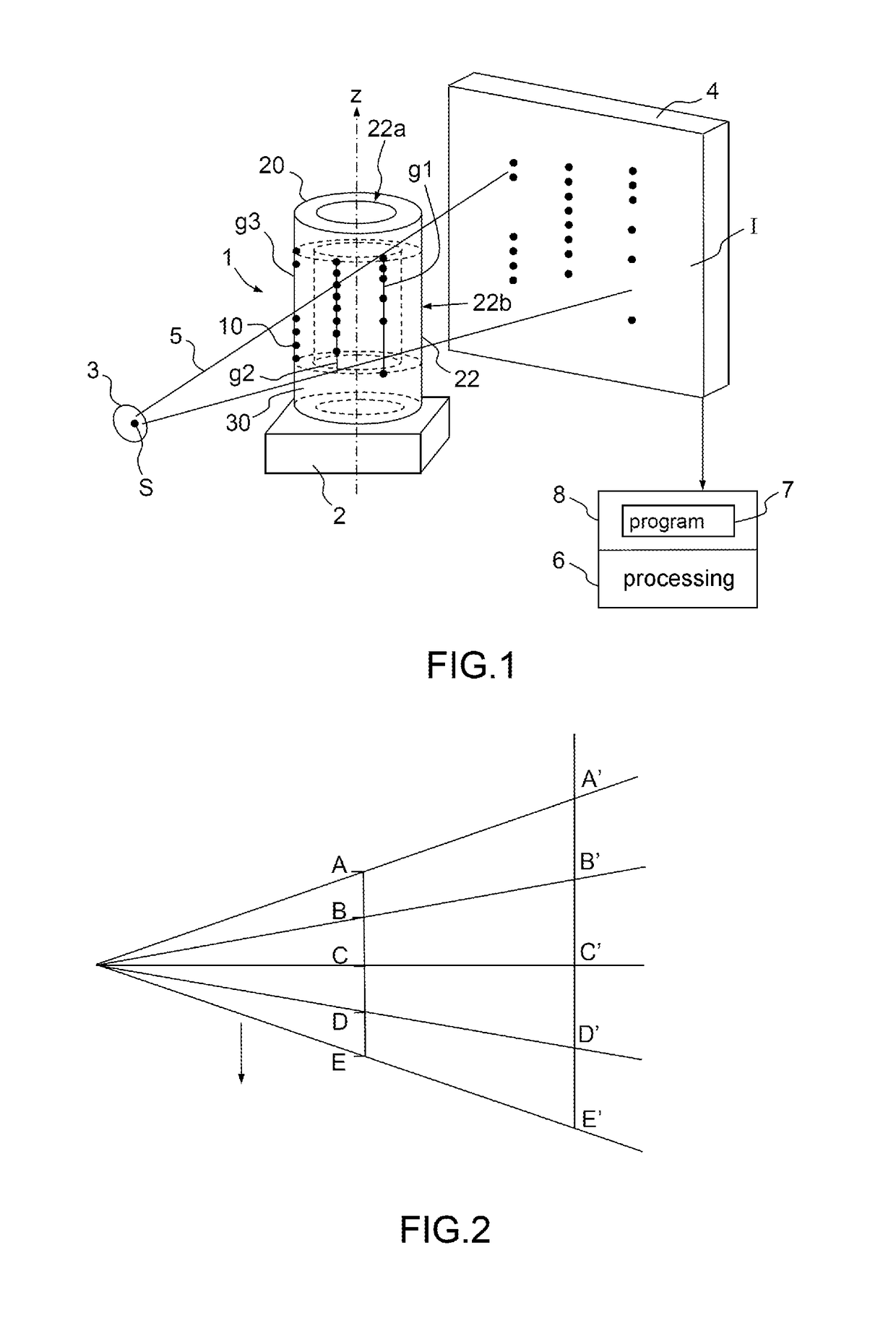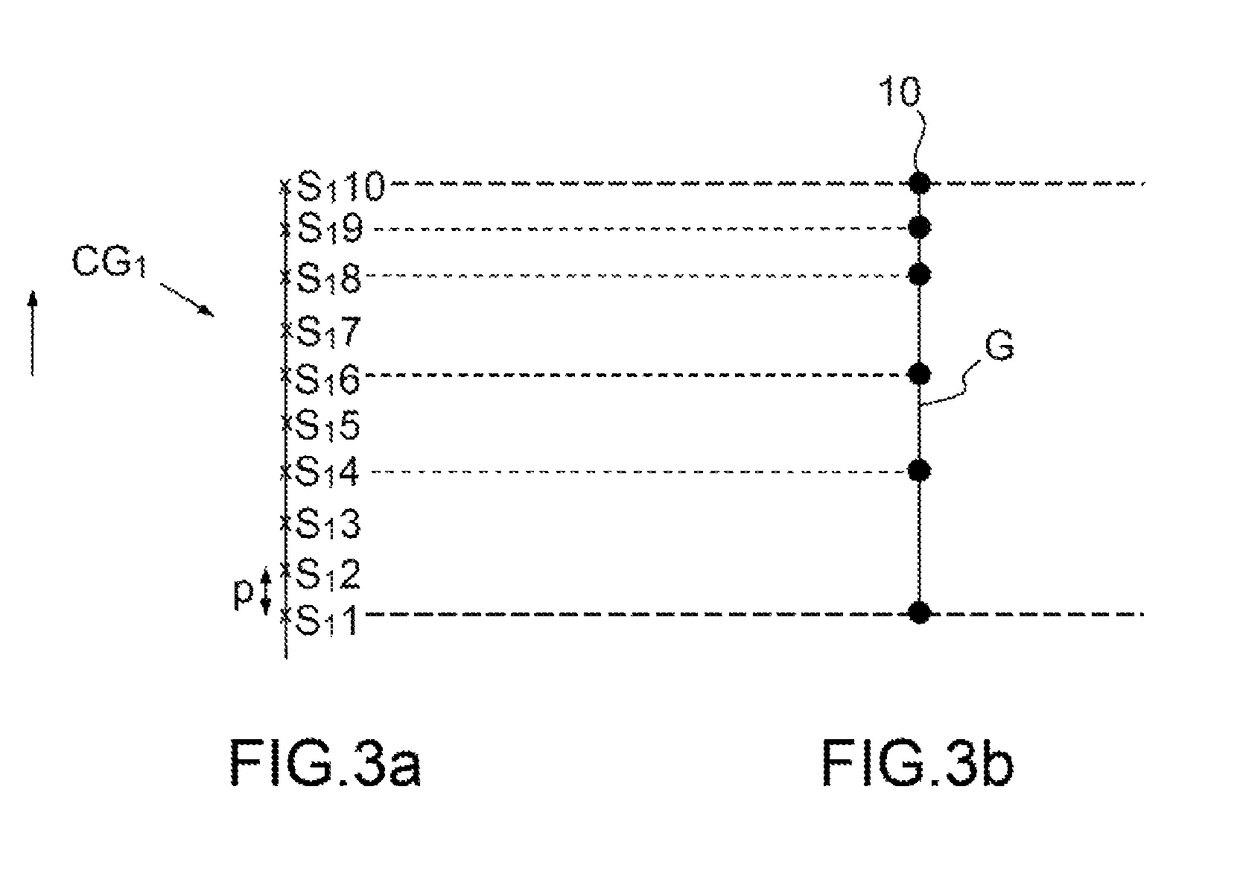Test pattern and method for calibrating an X-ray imaging device
a calibration method and x-ray imaging technology, applied in tomography, applications, instruments, etc., can solve the problems of affecting the accuracy of calibration and errors between ideal positions of source and/or detector with respect to objects and the positions they actually occupy, and adversely affecting the accuracy of calibration and therefore the reconstruction of 3d images. , the risk of making an error during the matching process is therefore much lower, and the calibration method is robust and reliable.
- Summary
- Abstract
- Description
- Claims
- Application Information
AI Technical Summary
Benefits of technology
Problems solved by technology
Method used
Image
Examples
Embodiment Construction
[0043]FIG. 1 shows an x-ray imaging device. This imaging device comprises an x-ray source 3 comprising a focal point S and a planar detector 4. The imaging device advantageously comprises a device (not shown) allowing the source 3 and the planar detector 4 to be moved with respect to a holder 2 intended to receive an object to be imaged.
[0044]The calibrating test pattern 1 according to the invention is thus interposed between an x-ray source 3 and the planar detector 4. It is stationary with respect to the holder 2. The calibrating device also comprises a processing device 6 that is configured to implement at least one processing method contained in a program 7 stored in a program memory 8. The test pattern 1 comprises markers 10. Advantageously, a program containing a processing method allowing geometric characteristics of the imaging device to be calculated from the association between projections of the markers of the test pattern in respective 2D projections of the test pattern ...
PUM
| Property | Measurement | Unit |
|---|---|---|
| size | aaaaa | aaaaa |
| length | aaaaa | aaaaa |
| energy | aaaaa | aaaaa |
Abstract
Description
Claims
Application Information
 Login to View More
Login to View More - R&D
- Intellectual Property
- Life Sciences
- Materials
- Tech Scout
- Unparalleled Data Quality
- Higher Quality Content
- 60% Fewer Hallucinations
Browse by: Latest US Patents, China's latest patents, Technical Efficacy Thesaurus, Application Domain, Technology Topic, Popular Technical Reports.
© 2025 PatSnap. All rights reserved.Legal|Privacy policy|Modern Slavery Act Transparency Statement|Sitemap|About US| Contact US: help@patsnap.com



